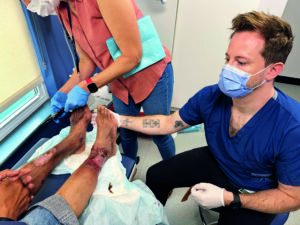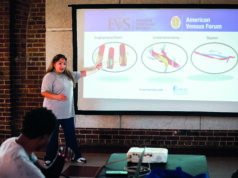
A pilot study in Canadian capital Ottawa aimed at uncovering the extent of undiagnosed vascular disease among the city’s homeless population detected a subset who may be in need of treatment for venous disease.
The work was carried out by a team from The Ottawa Hospital Division of Vascular Surgery. The group’s findings were presented at the 2024 annual meeting of the Canadian Society for Vascular Surgery (CSVS) being held in St. John’s, Newfoundland and Labrador (Sept. 13–14) by Ian Malnis, MD, a vascular surgery resident at the institution. The pilot is set to give way to a survey-based study aimed at establishing what are the barriers to obtaining wound care from vascular-trained providers.
The study grew out of Ottawa inner-city health authority’s review of the area’s growing homeless population, with the hospital identifying that they did not see a great deal of this demographic unless members presented with a big vascular problem.
“Ottawa inner city health has been operating there for a long,” explained Malnis. “They run a clinic downtown in Ottawa. Their mandate is for people with no fixed address or who are housing insecure. We partnered with them to run a monthly clinic there just to see what kinds of wounds they were seeing and whether or not those wounds were related to vascular disease or other traumatic injuries or infections that aren’t related to perfusion.”
Malnis, previously a nurse in Vancouver, has previous experience working with the homeless in the Canadian west coast city where there is a greater homeless problem. Among their findings while conducting the monthly clinics, Malnis and colleagues found that the nurse practitioners who assess patients reported a vascular knowledge gap.
“They said ‘We’d really benefit from having some extra education targeted specifically at how to refer, when to refer, how to properly assess people that we think have vascular disease,’” Malnis said. That led to afternoon classes, with more referrals from the downtown area now landing with the hospital’s vascular surgery division. “The nurse practitioners are accurately diagnosing people as not being in vascular disease. Most of the people that we saw who had any vascular problem was for venous disease. I think we saw one person with an arterial problem, and it was CLTI [chronic limb-threatening ischemia].”












